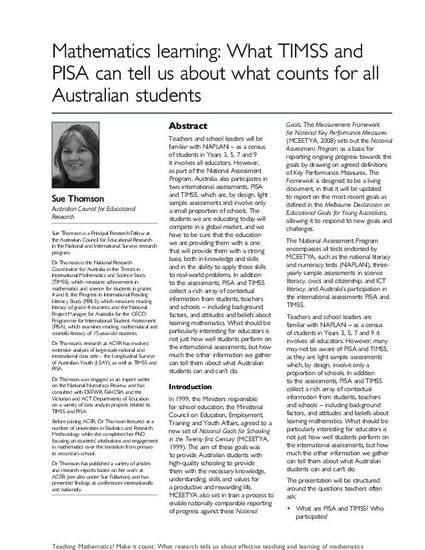
Presentation
Mathematics learning: what TIMSS and PISA can tell us about what counts for all Australian students
2009 - 2019 ACER Research Conferences
Start Date
17-8-2010 10:45 AM
End Date
17-8-2010 12:00 PM
Comments
Teachers and school leaders will be
familiar with NAPLAN – as a census
of students in Years 3, 5, 7 and 9
it involves all educators. However,
as part of the National Assessment
Program, Australia also participates in
two international assessments, PISA
and TIMSS, which are, by design, light
sample assessments and involve only
a small proportion of schools. The
students we are educating today will
compete in a global market, and we
have to be sure that the education
we are providing them with is one
that will provide them with a strong
base, both in knowledge and skills
and in the ability to apply those skills
to real-world problems. In addition
to the assessments, PISA and TIMSS
collect a rich array of contextual
information from students, teachers
and schools – including background
factors, and attitudes and beliefs about
learning mathematics. What should be
particularly interesting for educators is
not just how well students perform on
the international assessments, but how
much the other information we gather
can tell them about what Australian
students can and can’t do.
Citation Information
Sue Thomson. "Mathematics learning: what TIMSS and PISA can tell us about what counts for all Australian students" (2010) Available at: http://works.bepress.com/sue_thomson/14/
